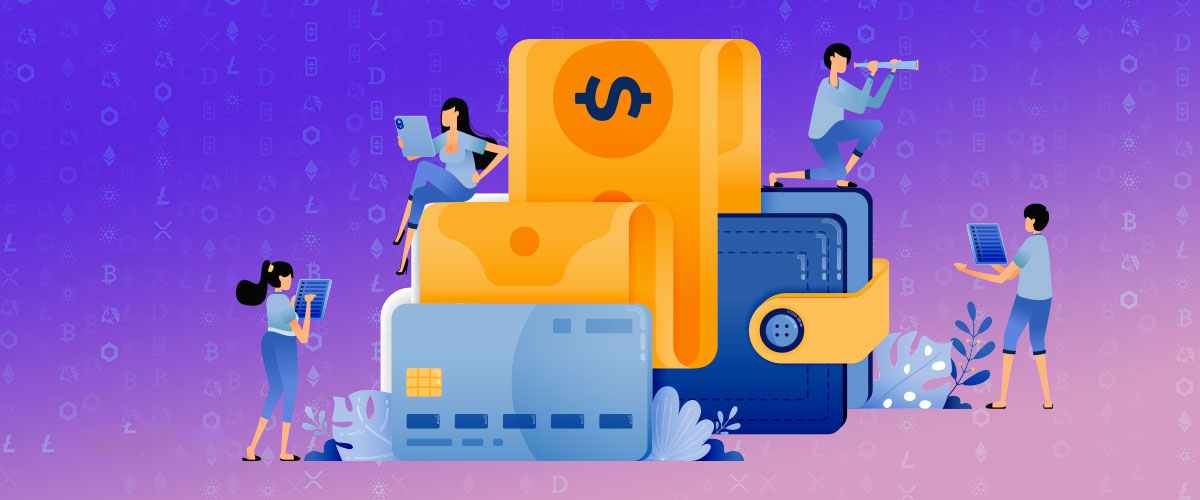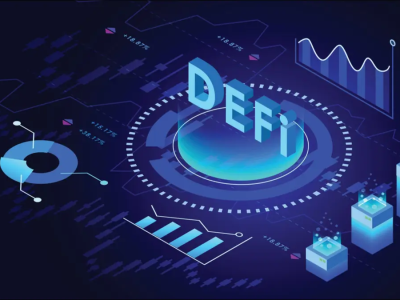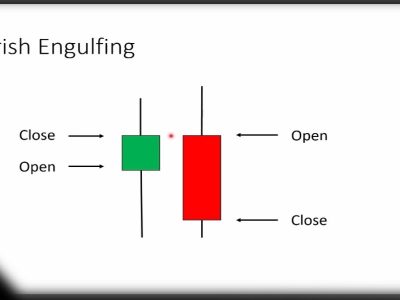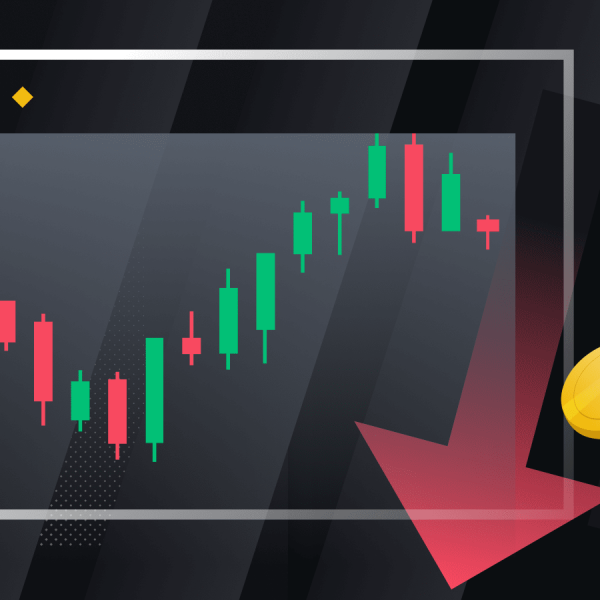Passive crypto income is money generated from investments in which an individual is not actively involved. In most cases, all you have to do is invest your money or digital assets in a specific cryptocurrency investment strategy or platform and make a profit. In some cases, profits are fixed and predictable. In others, several factors may be out of your control.
A common method that many try to make money without interfering with digital currencies is through the purchase and maintenance of cryptography – also known in the industry as “HODLing”. This means that an investor is ready to buy a digital asset with the mindset that its price will increase significantly in the future. Such investors are willing to go the extra mile, as this long-term strategy may require them to maintain their position for six months to five years. During this investment period, the investor does not have to be active in the digital currency market. All they have to do is buy a digital asset and store it in a secure wallet – preferably a non-custodial wallet.
However, buying and maintaining a crypto asset for a long time is not a guarantee of profit. In fact, it is possible to lose your money. As such, HODLing codes alone cannot be considered a passive real money generator.
Methods to earn passive crypto income

There are many potential ways to earn passive income with crypto include loans. Other methods, such as making a knot, extracting, or staking coins, are more technical.
Here are some ways to earn passive income with different types of crypto:
Proof of Stake (PoS)
Proof of stake is a consensus method used in Blockchain technology that acts as an alternative to proving the work of bitcoin. PoS networks agree on which transactions are valid through a process that involves nodes that lock or “store” large amounts of tokens for a period. Crypto staking replaces the role of mining.
Instead of “miners” receiving new block rewards like Proof of Work (PoW), “verifiers” receive new block rewards in PoS. Validations do not require expensive computer hardware, but they should have enough tokens to stand a chance of adding the next block to the chain. Many networks require an initial investment before they can be invested.
Some popular types of digital currencies available for stake in major exchanges include Cosmos (ATOM), Tezos (XTZ), and Cardano (ADA).
Interest-bearing digital asset accounts
A number of service providers allow users to deposit their currency password and make a profit from it, as is possible with a savings account. This has become an attractive product for investors as the returns on traditional cash savings accounts have fallen sharply in recent years.
To use such items, simply open an account and deposit their currency or stable coin password. There may be a “lock period”, during which users cannot access their funds for a certain period of time.
In return for the deposit, users receive interest on digital currencies. Stablecoins such as the US Dollar Coin (USDC) and Dai (DAI) often have the best interest rates. BlockFi, Celsius and Vauld are some of the popular companies that offer these types of accounts.
Lending
Investors can lend a variety of ways to get digital currencies out. In all cases, the idea is to lend cryptos to someone else for a fee. The amount earned depends on three things:
- Total value of borrowed cryptocurrencies
- Loan term
- Interest rate
Higher interest rates, longer loans, and larger loans can lead to higher interest rates for borrowers. In some cases, those who earn passive cryptocurrencies this way can choose the terms of the loans they create. In others, a third party negotiates the terms ahead of time.
Lending margin
Margin is lending to traders who want to trade using lent funds. This allows traders to strengthen their position with those assets and repay the loans with interest. Crypto exchanges do most of the work for you. Users only need to make their digital assets available.
Centralized lending
Centralized lending involves relying on the infrastructure and lending terms set by the third party. In this case, interest rates and lock periods are determined earlier. Users must deposit their cryptography to the lending platform before making a profit.
Decentralized lending
This option is also known as DeFi loan, this option includes using lending services directly through Blockchain. There are no intermediaries, and lenders and borrowers interact through smart contracts that automate interest rates.
Peer-to-peer lending
Platforms that enable peer-to-peer lending allow individuals to borrow directly from each other. Users must first lend their digital currency to the platform guard wallet. They can then set interest rates, loan terms and decide how much they want to lend. This allows users to have control over the crypto lending process.

Cloud extraction
Extracting proof-of-work digital currencies requires a significant investment in computing hardware along with the necessary technical knowledge. Cloud extraction contracts offer an alternative.
Instead of launching a new mining device, people can simply “lease” hashing power from an established operation. For a fixed amount, individuals can purchase cloud-mining contracts that give them a certain hash rate for a certain period of time. The contract holder receives new coins according to the size of his contract.
Dividend-Earning Tokens
Stocks-related tokens are digital currencies backed by a company’s stock. Sometimes these tokens offer dividends in the same way that shareholders receive dividends. Dividends are usually paid quarterly.
Yield Farming
The term “yield farming” became popular in 2020 and 2021 with the advent of decentralized exchanges that rely on smart contracts and liquidity provided by investors. To make a profit on the farm, investors deposit the tokens in a special smart contract called a liquidity pool. Those who provide liquidity in this way receive part of the commissions generated through traders who have access to the pool.
Yield farming is one of the more sophisticated options listed here and requires more research for those interested. However, it can also be one of the most lucrative options available for earning passive cryptocurrencies.
Yield farming often requires some Ethereum (ETH) along with a DeFi token such as Uniswap (UNI) or Pancake Swap (CAKE) or possibly a stablecoin such as Tether (USDT).
Execute a Lightning node
Bitcoin Lightning Network is a Layer 2 scalability solution that enables cost-effective, fast, small-scale micropayments. El Salvador, for example, which legalizes bitcoin as a legal tender, uses Lightning for its bitcoin transactions. Lightning nodes facilitate these transactions. Those who run the nodes receive a small portion of the fee for each transaction that is routed through their nodes.
Running a Lightning node generates very little revenue. Since commissions are so low, those who run a node may only earn a few dollars a month or less from Bitcoin. Some users report earning $25 a month (this also depends on the price of BTC against the user’s local Fiat currency).
This method does not generate as much inactive bitcoin revenue. Most participants do this to support the use of bitcoin as a medium of exchange and as the Lightning network grows and more transactions made through it, the revenue of node operators is likely to increase.
Affiliate programs
There are affiliate programs for many different business models, one of which is cryptography related products and services. For example, some exchanges offer affiliate programs.
To participate, users simply need to:
- Sign up, submit an application, or share an affiliate link
- Introduce a platform or product to your friends, family or social media followers
- Receive money each time a person takes a specific action, such as registering for an account at a specific exchange
For instance, when Coinbase is released, it offers a small bitcoin incentive to those who force a new user to sign up for an account through their affiliate link. Affiliate programs may not be the fastest way to monetize crypto, but they can be the easiest way.
Master nodes
Some blockchain networks, such as DASH, contain a special type of node called a “core node”. Those who run these nodes can get many payouts. However, this will not be available to the average person, as running a core node often requires maintaining a significant amount of network digital currency. It costs to run DASH 1000 DASH or about $130,000 at today’s prices. Masternodes receive a portion of the block reward each time a new block is mined.
Fork and AirDrop
A fork occurs when an existing coin splits into a new chain. Airdrops happen when new coins are created and thrown at users as a reward for some reason. Users have no control over the timing of these events. Nevertheless, being active in the crypto ecosystem increases the chances. For example, in 2017, everyone who owned Bitcoin (BTC) received the equivalent of Bitcoin Cache (BCH) when the network was Hard Forked. For example, a person with one BTC would receive 1 BCH.
In 2021, KeepKey hardware wallet users (among other groups) received an FOX AirDrop token from the company that runs the ShapeShift platform. Those who logged into ShapeShift at regular intervals automatically received tokens in their cryptocurrencies.
Sun Exchange
Sun Exchange is a South African-based company that invests in solar energy projects. Customers can purchase solar cells used for social projects in South Africa and receive a regular fee once the projects start producing solar energy.
Customers can pay for solar cells in Fiat or Bitcoin currency, and they can also receive their payments in Fiat or Bitcoin. This method of generating passive income with crypto differs from other methods in that there is a tangible investment. While other options are financial products, Sun Exchange allows people to invest directly in renewable energy projects built in South Africa.
Revenues from solar projects are usually small, paid monthly, and distributed for many years. Over time, the returns can be much higher than the initial investment.
FAQs
Is it possible to make a living with crypto?
Yes, you can make money with cryptocurrency trading. Due to the inherent fluctuations of crypto assets, most of them have a high degree of risk while others require domain knowledge or expertise. Cryptocurrency trading or HODLing are one of the solutions to how to make money nowadays.
What are the underlying risks of creating passive crypto income?
In many cases, users take 100% of the risk when making inactive cryptocurrencies. While it is possible to achieve a high rate of return, a total loss of the principal is also a possibility. There is also a risk of losing the value of the tokens. If a return is obtained on an altcoin, the rate of return depends on the value of that token. Note that stablecoins do not take this risk, assuming they keep their currency bonds at a 1:1 ratio. With DeFi, there is also a risk of protocols being hacked and with mining; there is a risk of rising electricity costs, equipment breakdowns or a loss of token market value.












